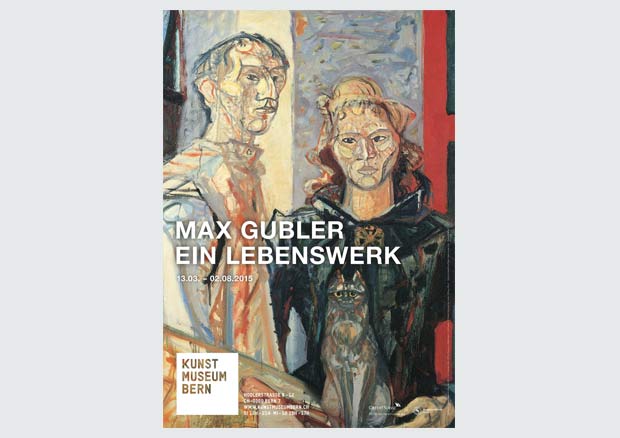Max Gubler. A Life’s Work, 13.03. - 02.08.2015
Gubler in His Entirety
Right into the 1960s, Max Gubler (1898 – 1973) was seen as the “sole genius of Swiss painting.” In the 1950s, he was probably the most celebrated and most exhibited artist in Switzerland. Max Frisch and Friedrich Dürrenmatt were among his great admirers. But still we have never had the chance to review his oeuvre in its entirety because his late work was kept under lock and key until only recently. The exhibition Max Gubler: A Life’s Work now makes it possible to gain a comprehensive view of the artist’s brilliant painting oeuvre.
Opinions on the 20th-century Swiss artist Max Gubler were long uniquely controversial. Reviews of his work span the superlative concerning artistic quality and goals during the 1940s and 1950s to totally relativizing and denigrating it after his decease. During his lifetime, Max Gubler was extolled as the Swiss counterpart to Van Gogh and Edvard Munch, and he represented Switzerland at the Venice Biennial. The key critic of his work, the influential art historian and author Gotthard Jedlicka, declared him to be THE Swiss artist of the 20th century. However, after he died, art critics relentless attacked Gubler, and did so without any knowledge of the work he produced during the last years in which he was still producing art. It wasn’t until the end of the 1990s that we began to revise this view of the artist, when Gubler’s work again began to be seen as relevant to the present in the context of the “Neue Wilden” or neo-expressionism (in Switzerland represented by artists such as Martin Disler, Miriam Cahn, or Sonja Sekula).
Late Work Kept Under Lock and Key
In the 20th century it is likewise unique that, in the case of a Swiss artist who was so enthusiastically celebrated during his lifetime, his oeuvre was split up into two parts until recently. On the one hand, it comprised an “official legacy” of 2,258 paintings executed by the artist until late fall in 1957. But 375 further paintings completed by the artist between 1958 and 1961 were put into storage. He had painted them during the time of his physical and mental illness, and they were locked away on request of his heirs because they thought they were not suitable to show to the public. In 1981, the heirs came to an agreement with the Swiss Institute for Art Research SIK-ISEA in Zurich that the late legacy would be kept under lock and key for a period of 30 years. This term was, in the end, even extended until October 2014 for the finalization of Bettina Brand-Claussen and Peter Cornelius Claussen’s publication in which they have researched the “unknown late works” of the artist’s career. Shortly after the book was published, works were selected for a presentation at the Museum zu Allerheiligen in Schaffhausen from October 2014 until February 2015. This exhibition was not intended as a retrospective, however.
Giving Reality a Visual Image
For a long time, Max Gubler’s art was viewed from the angle of the history of his health situation. What was considered strange, enigmatic, or extraordinary in his work was interpreted as a manifestation of his unstable mental condition. But painting in the 20th century is always also a confrontation with the crises of this era too. Hence the exhibition redirects our attention to the development of Gubler’s oeuvre with more than 100 paintings from all the phases of his artistic career. Our goal is to rediscover anew a brilliant oeuvre of modernism, one that bears the stamp of expressive realism and an artist’s struggle to articulate reality in a visual vocabulary. Gubler explored new forms of realism and ultimately ventured into the realms of abstract art. In the exhibition, Gubler’s artistic development will be traced in seven thematically organized rooms. The central space in which the staircase is situated is devoted to his wife, Maria. He painted her over 260 times. Otherwise, the show traces the thematic aspects of the artist’s neo-objective early work, figural compositions, landscapes, self-portraits, still lifes, and the paintings of his studio. Especially Gubler's works in series are remarkable. When he became interested in a motif he would execute it in up to twelve variant ways.
Springboard for the Show is the High-Class Legacy of Siblings Ruth and Hans-Rudolf KullThe point of departure for the comprehensive overview of this artist’s work is the legacy of the siblings Ruth and Hans-Rudolf Kull, which is part of the Kunstmuseum Bern Collection since 2010. They followed Max Gubler’s development and his work with great interest and enthusiasm, accruing a collection of exceptional artworks. Hence we have dedicated this exhibition to them.
Contact person: Brigit Bucher, , Tel.: +41 31 328 09 21
Images: Marie Louise Suter, , Tel.: +41 31 328 09 53


